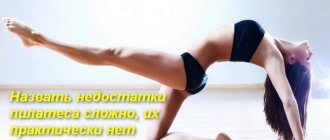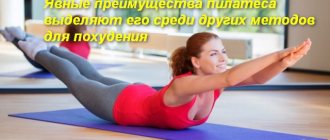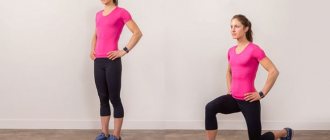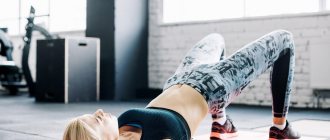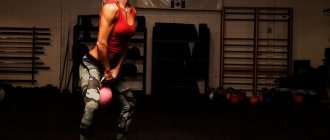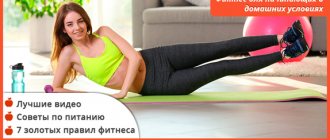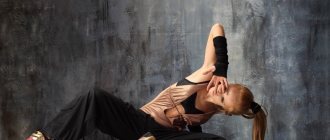How to do a leg stretch
Stretching the leg muscles (stretching) is required by professional athletes for running, hitting, jumping, and increasing their results. Properly selected stretching exercises are needed after intense strength training in the gym or at home, which tone some parts of the body while leaving others unattended. Exercise will help you stay in shape longer and prevent muscle and tendon imbalances. When performing strength exercises to pump up your biceps or abs, it seems logical to use the muscle groups in your legs. An expander will definitely come in handy.
Features and recommendations
The following tips will allow you to do the exercises correctly, without harm and with benefit
- It is important not to forget about your own breathing when performing exercises. Keep an eye on him. Breathe smoothly and deeply.
- To increase endurance and muscle stretch, exercises must be performed often, regularly and slowly.
- For girls seeking a toned figure and tone, stretching is a priority.
- The exercises presented are suitable for working from scratch. The main thing is to do it to the best of your ability.
- Performing leg stretches has an effect on more than just the target muscles. This process connects and forces the muscles of the entire body to work, toning them and contributing to a toned body silhouette.
Warm-up – start of stretching
Before performing leg stretching exercises, it is recommended to prepare the muscles - warm them up with an intense warm-up, preventing stretching. Try to do the following exercises:
- Jump rope at home for ten minutes, warming up your body parts.
- Fifteen-minute jog, foot warm-up - toe/heel.
- Perform leg swings 20 times, stretching the groin muscle.
- Sit down fifty times (preferably), step on your foot.
- Stretch your arms with jerking movements.
- Bend your torso to the right and left (20 times each), stretching your back.
- Walk in place, even out your breathing and heart rate.
After performing standard exercises, start stretching your leg muscles at home for people of any height and build. Exercises are classified into dynamic (suitable for those who frequently perform training) and static (for beginner women and men). For training, it is recommended to use an expander - it is easier to stretch with the exercise machine.
When to stretch your muscles: before, during exercise, after training?
Jacob Wilson, a sports physiologist at Florida State University, says stretching before exercise is important. However, this should not be a static form, you need to do a dynamic warm-up. And after classes, stretch to calm the body and bring the pulse back to normal (book “Cardio or Strength” by Alex Hutchinson).
Citing the same source, it can be noted that Jason Winchester, a scientist from Louisiana State University, is confident that you should not stretch before strength exercises . But stretching after training is a must. If such exercises are planned, it is good if enough time passes before the main strength exercises. You can also do them on non-training days, for example in the morning or before bed.
It is also a good idea to stretch the working muscles between sets of strength exercises. Not for long, literally 10-15 seconds.
Warm up before stretching
Experiments on rats at the University of Michigan showed that muscles must be warmed up before stretching, otherwise they will be severely injured. Experts advise warming up before stretching - jogging, cycling to warm up properly (book “Cardio or Strength” by Alex Hutchinson).
How and how long to stretch?
Ideally, stretching your legs should take 10-15 minutes. On average, stretching lasts about 10-20 minutes. Before it starts, you should restore your pulse.
Standard set of exercises
Effective stretching helps muscle groups to constantly stay in good shape and allows you to make your legs slender. We perform leg stretching correctly and consistently:
- After warming up, sit on the floor of the house, spread your legs shoulder-width apart, and try to reach your toes. After the attempt is made, fixation and freezing in the required position for several moments. Repeat the exercises twenty times.
- The legs are placed wider to the maximum possible distance without pain (standing position). Cross your arms over your chest and try to slowly bend your body forward. The goal of the exercise is to try to touch the floor with your elbow, regardless of height. Three sets of 10 times. Don't step on your knees.
- To properly stretch the muscles of the inner thigh, sit on the floor at home, connect your feet together (heel to heel), and try to touch the floor with your feet in the area of bent knees. Effective exercises for beginner women and men are given.
To properly stretch tendon tissue and muscles at home, it will take months of training the muscle groups in your calves, calves, and thighs. An expander helps to cope well with the task - they step on the simulator, grasping it when they are tall.
Exercises for shins
These are simple exercises that can be performed without sufficiently developed stretching.
Stretch against the wall
- Stand facing the wall at a distance of a small step, rest the toe of your right foot and palms against it, take the other leg one step back. The feet are pressed to the floor and do not come off throughout the entire exercise.
- Lean forward so that the knee of your right leg rests against the wall. The left one remains straight, and it is her lower leg that stretches.
- Repeat the movement for the other leg.
Heel Wall Stretch
- Stand in a position similar to the previous exercise, only now place the toe of your right foot on the wall and rest on your heel. Both legs are straight.
- Move your body forward, bending your right leg.
- Switch legs and repeat the exercise.
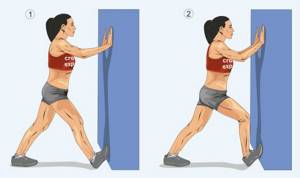
Anterior calf stretch
- Sit on your buttocks, legs straight.
- Bend one leg at the knee, place the foot on the thigh of the other leg and pull it towards the pelvis, helping with your hand. Pull the sock towards you.
- Do the same with the other leg.
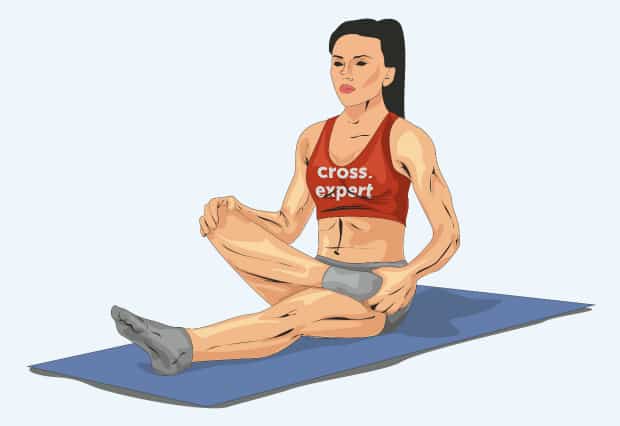
Complicating the task
After a week of training at home with warm-up and standard exercises, they move on to complex stretches of muscles and tendons. Gymnastics begin to increase the load at home. A chair, an expander, and an elastic band will come in handy.
High-quality stretching for losing weight on legs includes a set of exercises:
- After a good warm-up, sit on the floor, put your feet together, clasp your feet with your palms, try to reach your chin to your knees (smoothly, rhythmically, avoiding pain). To stretch better, use an expander; people of different heights sometimes find the exercise extremely difficult. Execute, fix, rise up.
- Stand up straight, put your feet together - heel to heel, toe to toe. Without bending your knees, bend down, fix, trying to touch the floor with your palms, and rise up. Effective exercises for the calf muscles are given. If the exercise does not work, put an expander on your feet and stretch while holding the device - for tall men and women.
- Sit on the floor of the house, stretch your leg straight, press the other one to the inner surface of your thigh with your foot. Bend in the direction of the extended leg, hold for 30 seconds, lift up, repeat (use an expander if necessary).
Increase training - gradually adding new movements, prolonged freezing in one position and effective exercises for muscle groups and tendons of the lower leg, calves and inner thighs. Correctly training body parts is a competent approach to physical exercise.
Twine for beginners
Splits help train muscles. You won't be able to sit down quickly like this. There is a set of exercises that are allowed at home for beginners: women, girls, boys and men. You can achieve good results only with an integrated approach, doing constant training at home:
- Take a chair and rest your hand on the back. Start swinging your leg - forward/backward, left/right. Repeat ten times, lean on the chair with your other hand, and perform the swings again. Each time the amplitude of the swings will increase, the chair will be superfluous.
- Spread your legs to the sides, place your hands with your palms on the floor, sit as low as possible, and begin to perform pendulum movements. The exercise simultaneously engages the muscles (calves, inner and back thighs, lower legs).
There is no need to perform grueling and painful workouts, trying to quickly do the splits. Using a chair as a support, you will be able to train the muscles of your calves, lower legs, and thighs (especially in men) gradually. Try to alternately place your legs on the chair and bend, lowering your pelvis down. If you overdo it, you risk tearing the tendon tissue.
Yoga is the best stretch
After systematically performing standard exercises for men and women that help stretch and develop muscle groups and tendons of the lower leg, calves and inner thighs, try your hand at a new activity - yoga techniques help people of any height, gender and age. To avoid injuries leading to tissue ruptures, you should not stretch until it hurts, you need to train your muscles using support, for example, a chair, and be sure to do a good warm-up.
To sit on the transverse splits (yogi’s teachings call the exercise Samokanasana), perform the following steps:
- Warming up the hip joints and stretching the hamstrings. Place your feet shoulder-width apart (heel rest), place your palms on the floor, perform lunges with your torso to the left and right, fixing the exercises for thirty seconds. They stretch the calf muscles, properly preparing for the split squat.
The yoga technique helps to do the splits quickly, but it is imperative to perform the exercises gradually, avoiding pulling the muscles and injuring the tendon tissue. It is advisable to use an expander for tall people.
Yoga is an effective method to quickly master the cross-split technique. The technique does not allow impacts, only smooth movements, without injuries leading to tissue ruptures. Often for yoga they use a soft expander with a loop, stepping into it and performing difficult stretching movements. A special frame has been developed for stretching the legs, with the help of which it is much easier to do the splits. It is allowed to use any technique, extremely carefully and gradually.
Stretching exercises: tips for men
Like any sport, stretching needs to be approached wisely.
Most often, two techniques are used in stretching: dynamics and statics. The first method is characterized by a small, soft range of motion, for example, stretching your arms forward while stretching in a cross split. With statics, the body position is motionless.
Use these tips to help you get the maximum effect from stretching and avoid injury:
Warming up the muscles is a must when doing stretching.
If you have just finished your workout, then there is no need to warm up.
If you start stretching in your free time, warm up your muscles well. To do this, take time to warm up and do some cardio.
Training time is at least 15 minutes.
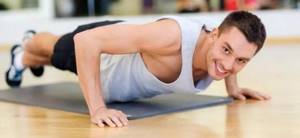
Photo: Exercises for men
- Don't overestimate your strength.
The main thing in stretching is a slow technique. Therefore, do not try to immediately spread your legs as far as possible, otherwise injuries are inevitable.
When performing exercises, you may only feel slight muscle tension, but not pain.
- Don't make sudden movements.
Stretches for beginners should be performed smoothly, without jerking.
Do you want to do a dynamic exercise? Watch for softness and range of motion.
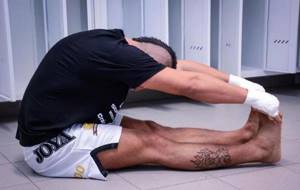
- Control your time.
For maximum stretching results, hold in one position for at least 30 seconds.
With each workout, increase the time by 5 seconds.
- Breathe correctly.
Many people forget about breathing when doing exercises. It is not right. Breathe through your nose, evenly and deeply.
- Exercise regularly.
If you think that you can stretch out in a week, then we hasten to disappoint you: this is impossible.
It will take at least a month to achieve tangible results. And then only on condition of regular exercise - 3-4 times a week for 15-20 minutes.
In addition to stretching your legs, take time to do other types of stretching. Stretch:
Extend your right hand forward, grab your wrist with your left, and pull your hand to the left. Switch hands.
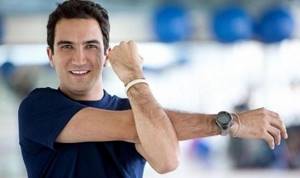
- Back and arms.
Bend your right arm at the elbow and move it back. Bend your left one at the elbow and place it behind your back. Try to lock your hands behind you.
Place your right hand on the top of your head and tilt your head to the right. Stretch your other arm down as far as possible. Repeat for the left side.
You learned how to do stretching for men at home.
Exercise regularly and you will soon feel how your physical and mental state has changed.
Stretching for men at home

In the modern world, sports are present in the lives of many men. Everyone pumps up the abs, works the muscles of the arms, legs and back. And only a few remember the need to stretch.
Many naively believe that muscle stretching is the province of women or the whim of scrupulous trainers. In fact, this is a necessary component of any person’s training. And it is precisely for the full physical health of a man that stretching should not be forgotten.
Benefits of stretching
- First of all, it improves a man's sexual health. Due to the fact that during exercise, blood flows abundantly to the groin area, potency improves. This promotes physical and mental health.
- Well-warmed muscles are more resilient. This means that any workout will be much more effective if you stretch well before it.
- Reduces the risk of injury and damage. This applies to stretching not only before training, but also before any physical activity.

Stretching Tips
- Before the start of the lesson, it is necessary to warm up the muscles well; to do this, it is enough to perform the exercises known to everyone;
- Stretching must be performed in several approaches, optimally 3-4 times;
- The time of each approach should be limited in time. The most effective is considered to be done for 30 seconds to a minute;
- Do not overestimate your strengths, remember that it is better to do less than to overdo it, harming yourself and stopping the activity;
- There is no room for sudden movements in stretching. Everything must be done smoothly and slowly;
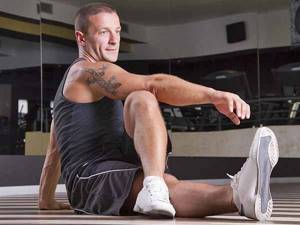
- Be attentive to your feelings. Stretching should not lead to unpleasant sensations, much less pain. Such symptoms only indicate muscle overstrain;
- Watch your breathing. This is what contributes to the effectiveness of classes. Timely inhalation and exhalation relieves muscle tension, relaxing the body, reducing resistance.
Recommendations for performing the leg stretching complex
Follow these tips and your workouts will become even more effective:
- To get noticeable results, you need to stretch regularly. 3-4 times a week will be enough.
- It is better to do a stretching complex (suples) in the evening rather than in the morning. The muscles have warmed up and stretched during the day, so it will be easier to perform the exercises.
- You need to exercise for at least 30 minutes. We hold each position from 15 seconds to 1 minute.
- Before stretching, it is advisable to warm up the muscles: do swings, squat, otherwise you can pull the ligaments and muscles of the leg.
- Static stretching is safer than dynamic stretching, but this does not mean that you cannot help yourself by swaying. However, here you need to understand moderation: there should be no sharp jerks with a large amplitude (watch the training video).
- You should not feel much painful tension in your legs. There is no need to stretch until it hurts.
- The most important thing is to try to relax in each position. Only when you relax do the muscles begin to stretch.
If you are not a very flexible person by nature and are sure that it is too late for you to do stretching and nothing will work, this is a misconception. The older a person is, the longer it may take to see visible results, but anyone can improve their flexibility.
Stretching exercises at home
These exercises can be performed as a warm-up before starting strength training, or as a full-fledged lesson. No special equipment is required to perform them, so everything can be easily done at home or outdoors.
Knee to chest
Stand straight, confidently resting on both feet. Bend your right leg at the knee and pull it towards your chest.
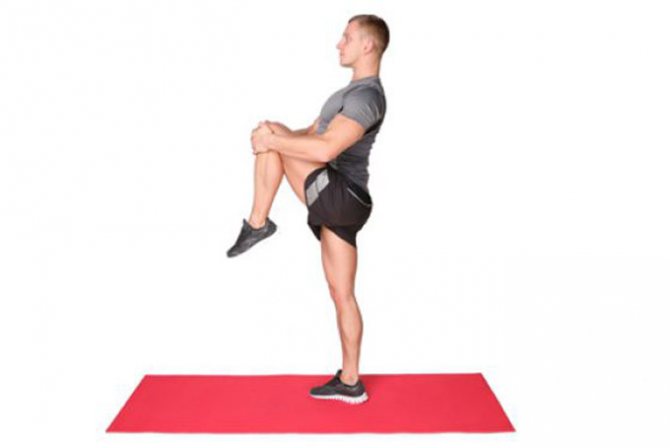
Ideally, the knee should be pressed tightly against the body, but this does not need to be achieved if the exercise is being performed for the first time. Find your maximum possible and stay in this pose, helping yourself with your hands.
"Frog"
Sitting on the floor, pull your legs towards you as much as possible, placing your feet on the floor. Slowly begin to spread your knees out to the sides, aiming to place them on the floor.
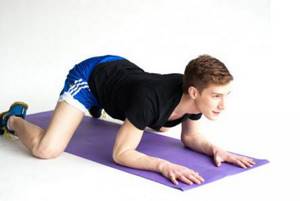
You can help yourself with your hands, lightly pressing your elbows on your knees. Don't press too hard, there shouldn't be any pain.
"Frog Lying"
Lie on your back and, bending your knees, begin to spread them in different directions, trying to place your thigh on the floor.

You can help yourself with your hands, but no sudden movements.
Lunges
Take a big step forward with your right foot. The bent knee of the front leg should form an angle of 90 degrees.

The left leg should be straight. During the exercise, you can put your hands on your belt; if it becomes difficult, you can lower them to the floor.
"Ring"
Lunge forward with your right leg as in the previous exercise. Then, bending your left leg, gradually sit down on it, fully straightening your right leg.

When performing the exercise, pull the toe of your right foot towards you to better feel your calves.
"Pigeon"
Sit on the floor, bend your right leg in front of you at the knee. Gently move your left one back and try to press your thigh to the floor.
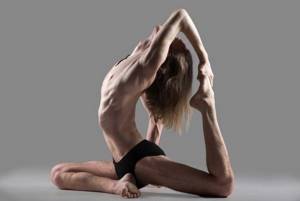
You should feel the upper thigh well.
Cross twine
Sit on the floor with your straight legs spread as wide as possible. Bend your body forward, aiming your chest towards the floor.
Make sure your back remains straight and your toes point up.
"Child's Pose"
Sit on your heels, spread your legs slightly, pointing your knees in different directions. Lean forward with your body on your knees.

Stretch your arms forward on the floor as far as possible. You should feel the muscles of your back and arms.
Muscle stretching for splits
To learn how to do longitudinal or transverse splits, you need to perform a set of the following exercises daily:
- A standard exercise for any type of stretching is bending forward from a standing position. Feet should be placed together, back straight. Bend forward with your arms extended. When bending, you need to bring your chest as close to your knees as possible. Stretch your face towards your feet as far as possible. Remain in this position for 15-20 seconds, repeat the exercise 3 times.
- Stand up straight with your legs together, arms extended at your sides. Place the right leg forward 100-110 cm from the left. Bend your torso forward, sliding your hands evenly along your extended leg, pulling your chest toward the thigh of your right leg. Fingers reach forward or touch the floor. You need to stay in this position for 25-30 seconds, then change legs.
- Sit on the floor, spreading your legs as wide as possible. Bend the torso forward, trying to touch the chest and head to the floor, arms extended forward. Stay in the pose for 20-30 seconds. Perform 3-4 repetitions.

This exercise is the most effective for stretching at home. In just six months you will be doing the splits - Remaining in a sitting position with legs wide apart, bend to the sides, trying to reach your toes with your fingers. Fix the pose for 30-40 seconds for each leg.
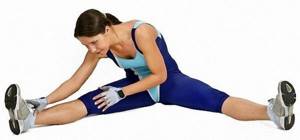
- You need to lie on the floor with your knees bent. The right leg is raised up, while exhaling, they grab the foot and pull it towards themselves as far as possible. The left leg remains in its original position. To make the exercise easier, use a strap or strong tape to wrap your foot around your foot. It is necessary to remain in this position for 15-20 seconds, then perform it for the left leg.
To do the splits for a beginner, you need to practice for a long time. Stretching should be done for 4-6 months to prepare the muscles and joints. Gradually you need to increase the duration of each exercise by an average of 5 seconds.
Don't miss the most popular article in the section: Laser hair removal on the face and body - how it is done, effectiveness, before and after photos, contraindications.
